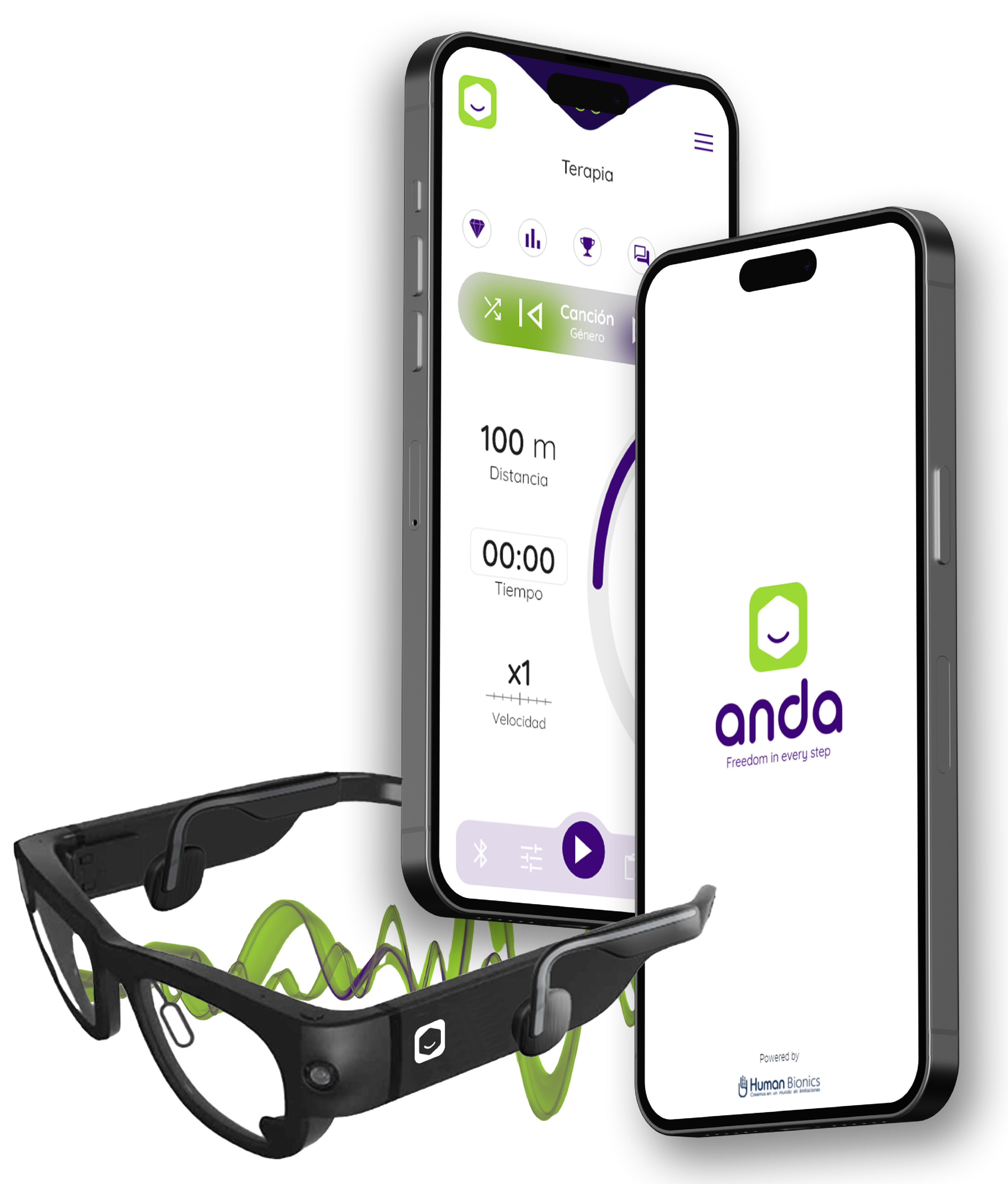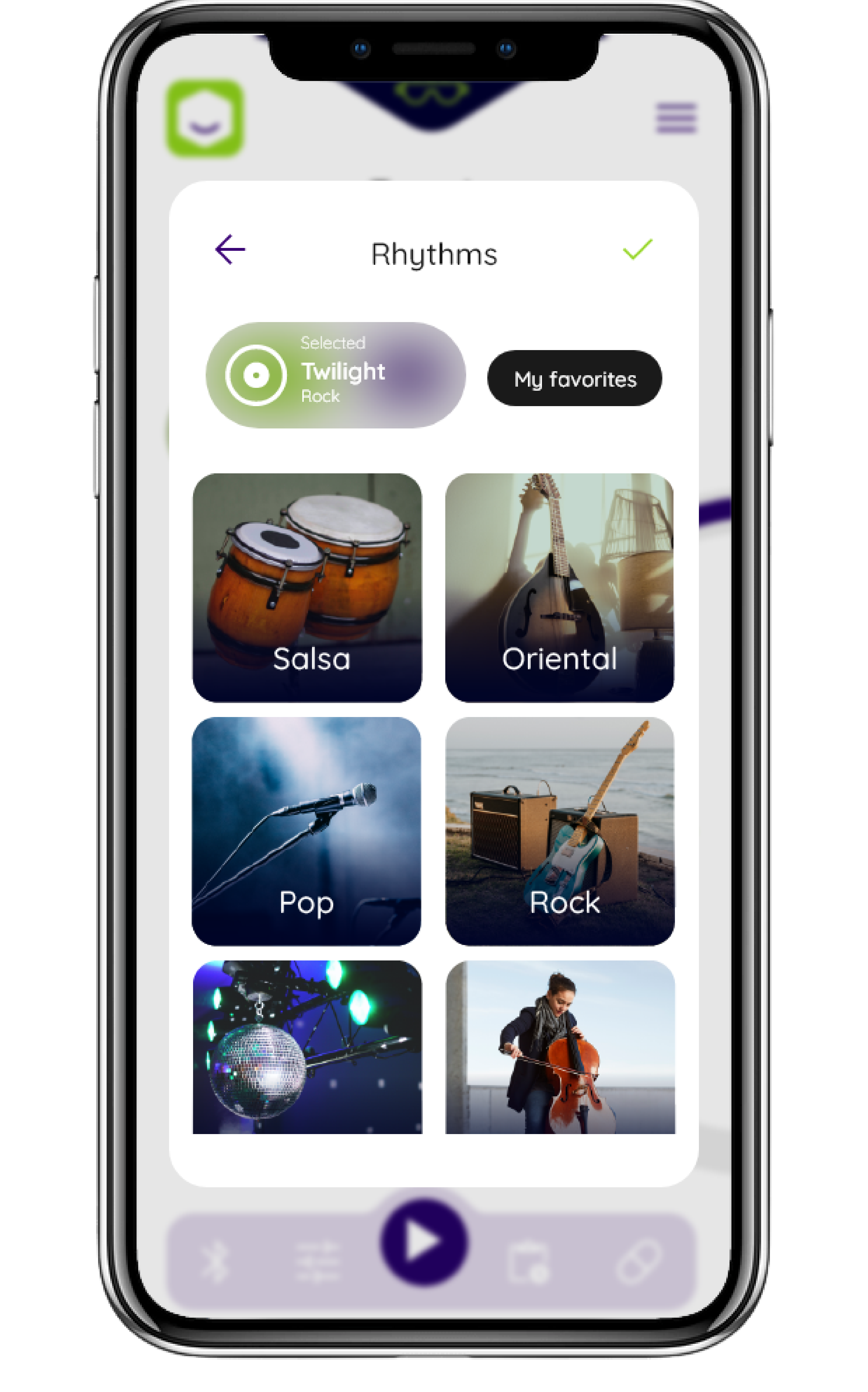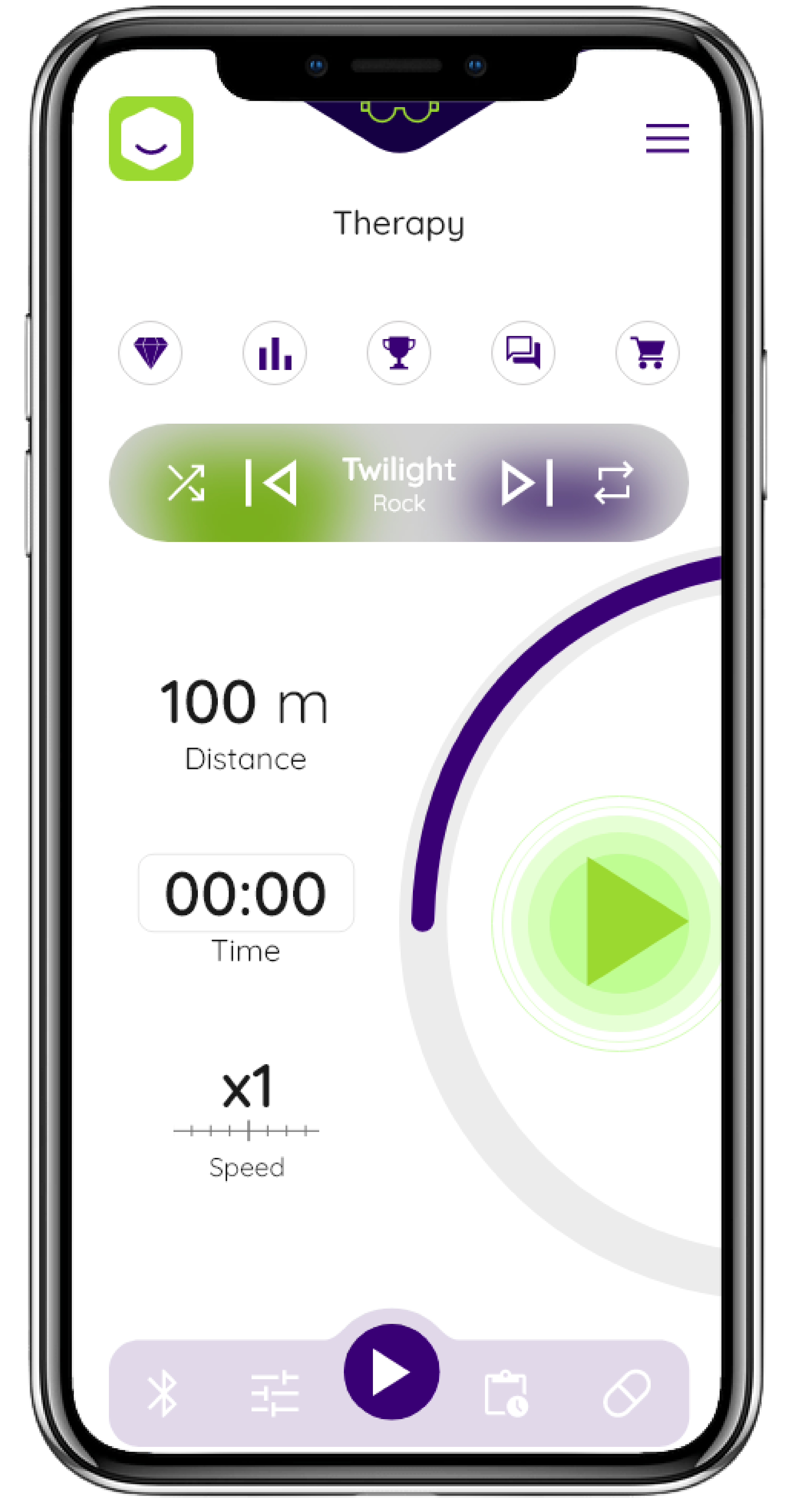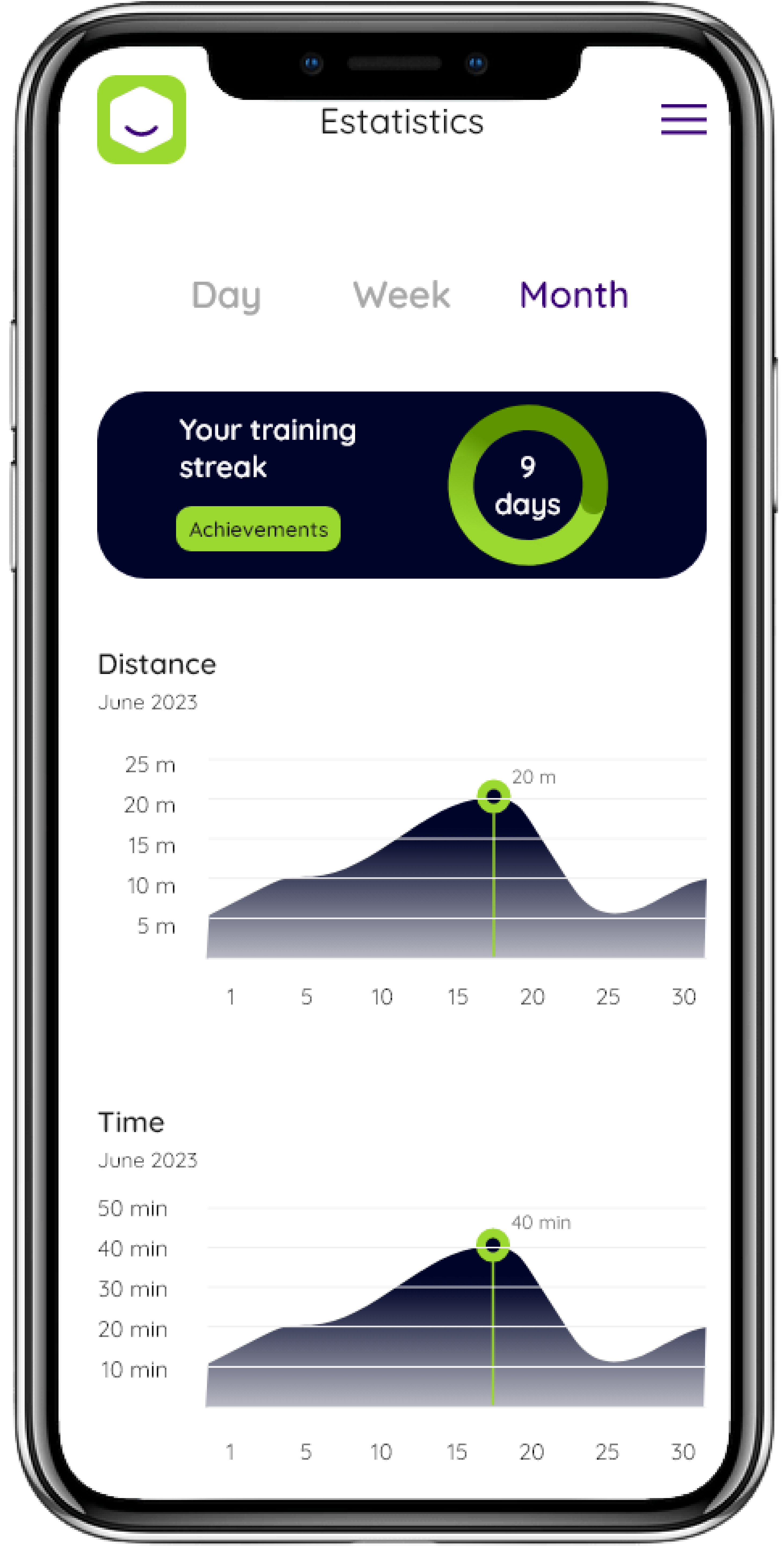
Proceso 100% natural
La tecnología Anda, logra estimular el cerebro de forma completamente natural, sin uso de sustancias químicas o inserción de componentes.
Fácil acceso
Al descargar la aplicación, podrás acceder desde tu celular a los estímulos sonoros de Anda, en cualquier momento y lugar.
Científicamente comprobado
La tecnología Anda cuenta con estudios clínicos que certifican la mejora de la marcha en los pacientes con Parkinson.

Tecnología Anda
Nuestros estímulos auditivos han sido diseñados bajo una base matemática que iguala la frecuencia del ritmo a la frecuencia de los pasos por medio del uso de Beats. Para garantizar una excelente experiencia a nuestros usuarios, hemos insertado estos beats en más de 100 ritmos diferentes que se encuentran disponibles en nuestra aplicación.
¿Te gustaría saber como suena Anda app?

Anda Parkinson
UNA ALTERNATIVA TECNOLÓGICA
¿Cómo funciona Anda app?
Para probar la efectividad de nuestra aplicación, primero deberás descargarla desde tu tienda de aplicaciones.
Una vez instalada en tu celular, ingresa y registra tu correo, junto con la información de tu perfil. Esto facilitará el acceso a tu cuenta en el futuro.
Cuando desees iniciar tu marcha te recomendamos buscar espacios abiertos, libre de obstáculos y con una superficie plana, para evitar tropiezos.
Ahora sí, comencemos…

Paso 1.
Selecciona tú género musical favorito, esto mejorará tu experiencia mientras usas nuestra aplicación. Escoge entre más de 100 canciones que tenemos disponibles.

Paso 2.
Presiona iniciar para comenzar a caminar y si, deseas acelerar el paso, presiona X2, esto también acelera el ritmo del Beat en cada canción.

Paso 3.
En tu perfil siempre podrás acceder a las estadísticas de entrenamiento, así como también podrás verlo al final de cada recorrido. Así podrás plantearte metas y ver tu evolución
¿Cómo funciona Anda app?
Para probar la efectividad de nuestra aplicación, primero deberás descargarla desde tu tienda de aplicaciones.
Una vez instalada en tu celular, ingresa y registra tu correo, junto con la información de tu perfil. Esto facilitará el acceso a tu cuenta en el futuro.
Cuando desees iniciar tu marcha te recomendamos buscar espacios abiertos, libre de obstáculos y con una superficie plana, para evitar tropiezos.
Ahora sí, comencemos…

Paso 1.
Selecciona tú género musical favorito, esto mejorará tu experiencia mientras usas nuestra aplicación. Escoge entre más de 100 canciones que tenemos disponibles.

Paso 2.
Presiona iniciar para comenzar a caminar y si, deseas acelerar el paso, presiona X2, esto también acelera el ritmo del Beat en cada canción.

Paso 3.
En tu perfil siempre podrás acceder a las estadísticas de entrenamiento, así como también podrás verlo al final de cada recorrido. Así podrás plantearte metas y ver tu evolución
Resultados Comprobados
Para garantizar la efectividad de la tecnología Anda (conocido anteriormente como Listenmee), nuestro producto fue sometido a estudios clínicos, que demostraron una mejora en la velocidad, estabilidad y longitud de cada paso, tal como muestra el antes y después en nuestros usuarios.
Anda App
Un producto con reconocimiento mundial.
1er Lugar
Innovación Tecnológica en América
Global Innovation Forum 2022, Osaka– Feb 2023.
Winners
Startup Accelerator
Okinawa Institute of Science and Technology Graduate University 2022
1er Lugar
Compañía más innovadora 2021.
Colombian Chambers of Commerce – Dec 2021.
1er Lugar
Desarrollo de tecnología innovadora.
CEATEC, Japan – Oct 2019.
Finalista
Mejor Aplicación de salud
History Channel – Una idea para cambiar el mundo. Sep 2018.
3er Lugar
Compañía más innovadora de Latinoamérica 2017.
LAB+4 Chile. Jul 2017.
1er Lugar
Compañía más innovadora 2016.
Héroes fest 2016 – ALDEA INNPULSA. Nov 2016.
Anda App
Un producto con reconocimiento mundial.
1er Lugar
Innovación Tecnológica en América
Global Innovation Forum 2022, Osaka– Feb 2023.
Winners
Startup Accelerator
Okinawa Institute of Science and Technology Graduate University 2022
1er Lugar
Compañía más innovadora 2021.
Colombian Chambers of Commerce – Dec 2021.
1er Lugar
Desarrollo de tecnología innovadora.
CEATEC, Japan – Oct 2019.
Finalista
Mejor Aplicación de salud
History Channel – Una idea para cambiar el mundo. Sep 2018.
3er Lugar
Compañía más innovadora de Latinoamérica 2017.
LAB+4 Chile. Jul 2017.
1er Lugar
Compañía más innovadora 2016.
Héroes fest 2016 – ALDEA INNPULSA. Nov 2016.

La identidad de una startup colombiana que desarrolla equipos médicos en Okinawa
New switch. 27/11/2022
Una startup colombiana está sudando desarrollo en Okinawa. El nombre del equipo es anda, que significa “avanzar” en español. Nuestro objetivo es comercializar un dispositivo de mejora de la marcha para pacientes con enfermedad de Parkinson utilizando realidad aumentada (AR).

Startups que conectan la mente y el cuerpo para impactar el tratamiento de enfermedades
Okinawa Institute of Science and Technology Graduate University. 07/09/2022
Lea nuestra noticia sobre 2 equipos emprendedores que llegaron recientemente a Okinawa para unirse al último lote del Programa Acelerador de Startups de Innovation Square.

HUMAN BIONICS(Columbia) Creemos en un mundo sin limitaciones
GIF Osaka. 01/07/2021
Human Bionics SAS ha desarrollado una APP llamada ANDA conectada a un par de gafas que reproducen ritmos, sonidos y órdenes especializadas para pacientes de Parkinson. Estos sonidos pueden ayudarles a descongelar la marcha que produce la enfermedad de Parkinson.

Empresa Human Bionics
BGA Inédita. 18/05/2021
Un invento que ayuda a mejorar la calidad de vida de quienes padecen enfermedades degenerativas que afectan la marcha, como el parkinson y el alzheimer, ha sido creado por un bumangués. Él es Carlos Andrés Escalante Higuera, director general de Human Bionics.
¿Siguiente Paso?

